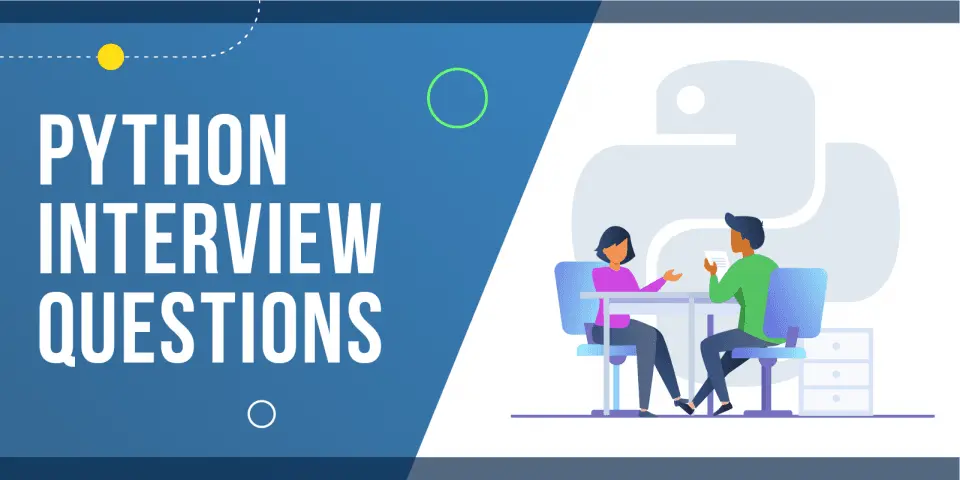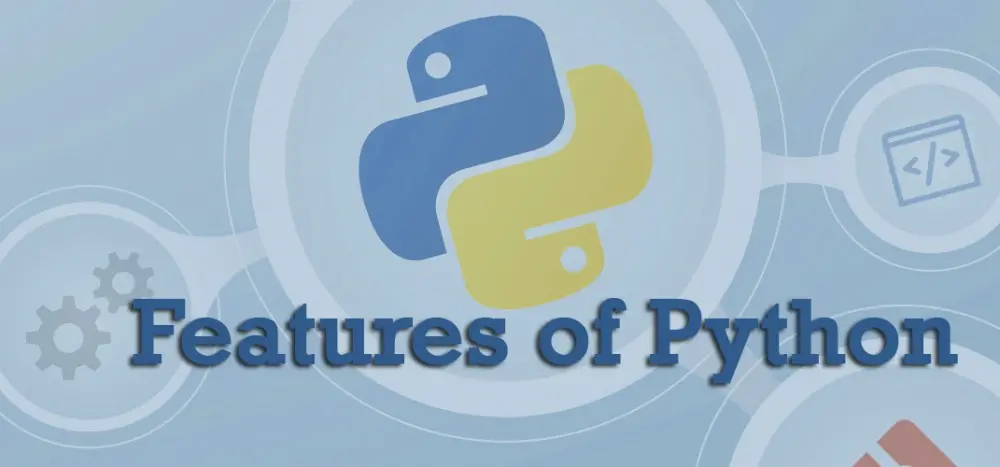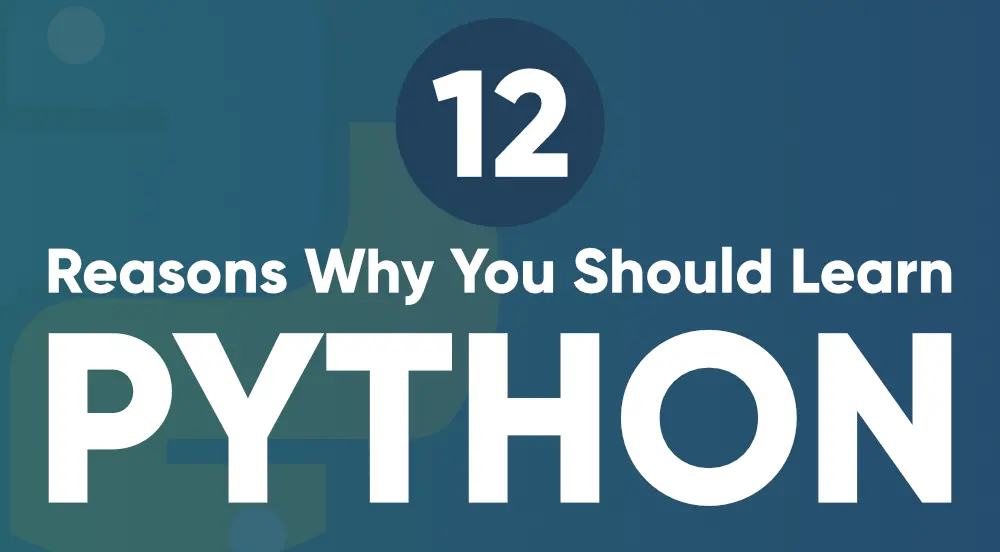Table of Contents
Python is one of today's most popular languages. Worldwide, major companies are building apps and programs utilising this object-oriented language. In Python Job interviews in many sectors, you will meet some of the most frequently asked questions.
I will provide you with the most frequently asked questions in 2021 Python interviews in this blog about Python interview questions. We have 100+ questions about Python Programming fundamentals that assist you to make the most of our site with varied degrees of competence.
-
Benefits of using Python?
Python is a general programming language that features a simple, easy to learn, readable syntax that decreases program maintenance costs. In addition, language is fully open-source and supports third-party packages which encourage modularity and code reuse. Together with dynamic typing and dynamic connectivity its high-level data structures attract a broad group of developers for fast application development and deployment. -
What is a dynamically typed language?
We should learn what type of language is before we comprehend how dynamically. In programming languages, type-checking is referred to. "1" + 2 will lead to a type error, because these languages do not enable "type coercion" in a very typed language such as Python (implicit conversion of data types). On the other hand, a weakly-typed language, like Javascript, just releases "12." Type-checking can be done at two stages - Static - Data Types are checked before execution. Dynamic - Data Types are checked during execution. Python being an interpreted language, executes each statement line by line and thus type-checking is done on the fly, during execution. Hence, Python is a Dynamically Typed language. -
Python an interpreted language. Explain.
Ans: Any programming language that is not in the machine level before running is an interpreted language. So Python is a language that is interpreted. -
What is pep 8?
PEP stands for Python Enhancement Proposal. It is a set of guidelines which govern how Python code can be formatted for high reading. -
What is the difference between lists and tuples?

Lists Tuples Lists can be changed, i.e. mutable Tuples are immutable (they are lists that cannot be edited) Lists are typically slower than tuples. Tuples are faster than lists Lists consume a lot of memory Tuples consume less memory when compared to lists Lists are less error-prone because unexpected changes are more likely to occur. Tuples are more reliable as it is hard for any unexpected change to occur Lists consist of many built-in functions. There are no integrated functions in tuples. Syntax: list_abc = Syntax: tup_xyz = (10, 'hello' , 20) -
How is Memory managed in Python?
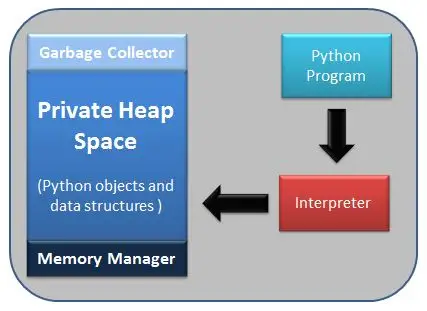 Python's memory is handled by Python's private heap space. In a private heap are all Python objects and the data structures.The Python Interpreter itself is taking care of this private heap, and a programmer has no access to this private heap.
Python Memory Manager handles Python private heap space allocation.
Private heap space for Python is provided through the built-in waste collector from Python that recycles and unloads all unneeded memory.
Python's memory is handled by Python's private heap space. In a private heap are all Python objects and the data structures.The Python Interpreter itself is taking care of this private heap, and a programmer has no access to this private heap.
Python Memory Manager handles Python private heap space allocation.
Private heap space for Python is provided through the built-in waste collector from Python that recycles and unloads all unneeded memory. -
What are Python namespaces? Why are they used?
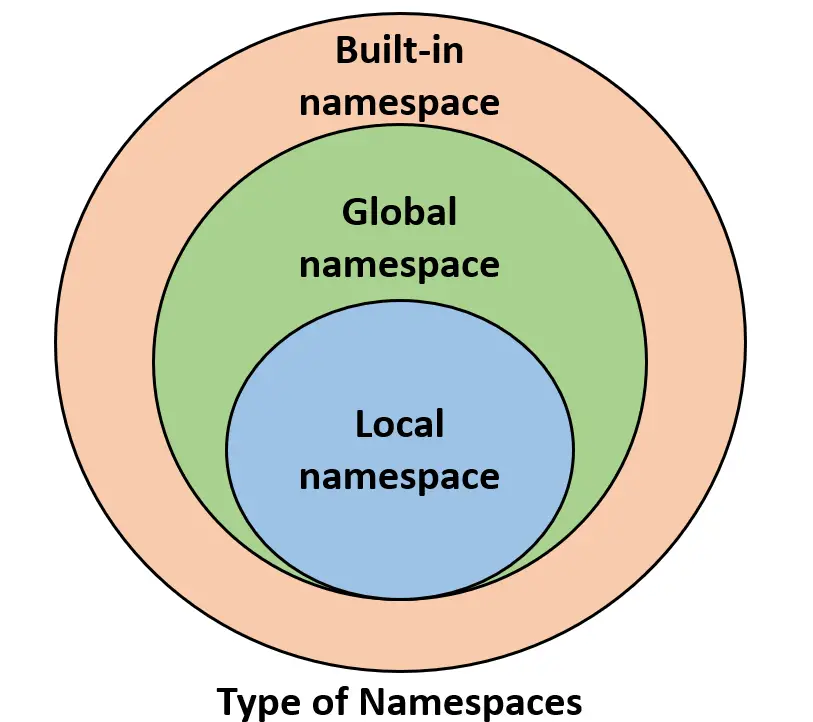 In Python, a namespace ensures that object names are unique and can be used without conflict. These namespaces are implemented in Python as dictionaries with a 'name as key' and a corresponding 'object as value.' Multiple namespaces can use the same name and map it to a different object as a result of this. Here are a few instances of namespaces: Local Namespace Within a function, local names are stored in the Local Namespace. When a function is called, a temporary namespace is formed, which is then removed when the function returns. Global Namespace The names of various imported packages/modules used in the current project are stored in the Global Namespace. When the package is imported into the script, this namespace is generated and persists until the script is executed. Built-in Namespace Built-in Namespace contains essential Python built-in functions as well as built-in names for different types of exceptions.
The lifecycle of a namespace is determined by the scope of objects to which it is assigned. The lifespan of a namespace comes to an end when the scope of an object expires. As a result, accessing inner namespace objects from an outer namespace is not possible.
In Python, a namespace ensures that object names are unique and can be used without conflict. These namespaces are implemented in Python as dictionaries with a 'name as key' and a corresponding 'object as value.' Multiple namespaces can use the same name and map it to a different object as a result of this. Here are a few instances of namespaces: Local Namespace Within a function, local names are stored in the Local Namespace. When a function is called, a temporary namespace is formed, which is then removed when the function returns. Global Namespace The names of various imported packages/modules used in the current project are stored in the Global Namespace. When the package is imported into the script, this namespace is generated and persists until the script is executed. Built-in Namespace Built-in Namespace contains essential Python built-in functions as well as built-in names for different types of exceptions.
The lifecycle of a namespace is determined by the scope of objects to which it is assigned. The lifespan of a namespace comes to an end when the scope of an object expires. As a result, accessing inner namespace objects from an outer namespace is not possible.
What is Pandas?
Pandas is an open source Python library with a large collection of data structures for data-driven activities. Pandas, with its interesting characteristics, fits in every function of data operation, from academics to tackling complicated corporate challenges. Pandas can handle a wide range of files and is one of the most crucial tools to master.What are dataframes?
A pandas dataframe is a changeable data structure in pandas. Pandas supports heterogeneous data that is organised along two axes. Files to be read into pandas:- Import pandas as pd
df=p.read_csv(“mydata.csv”) 
